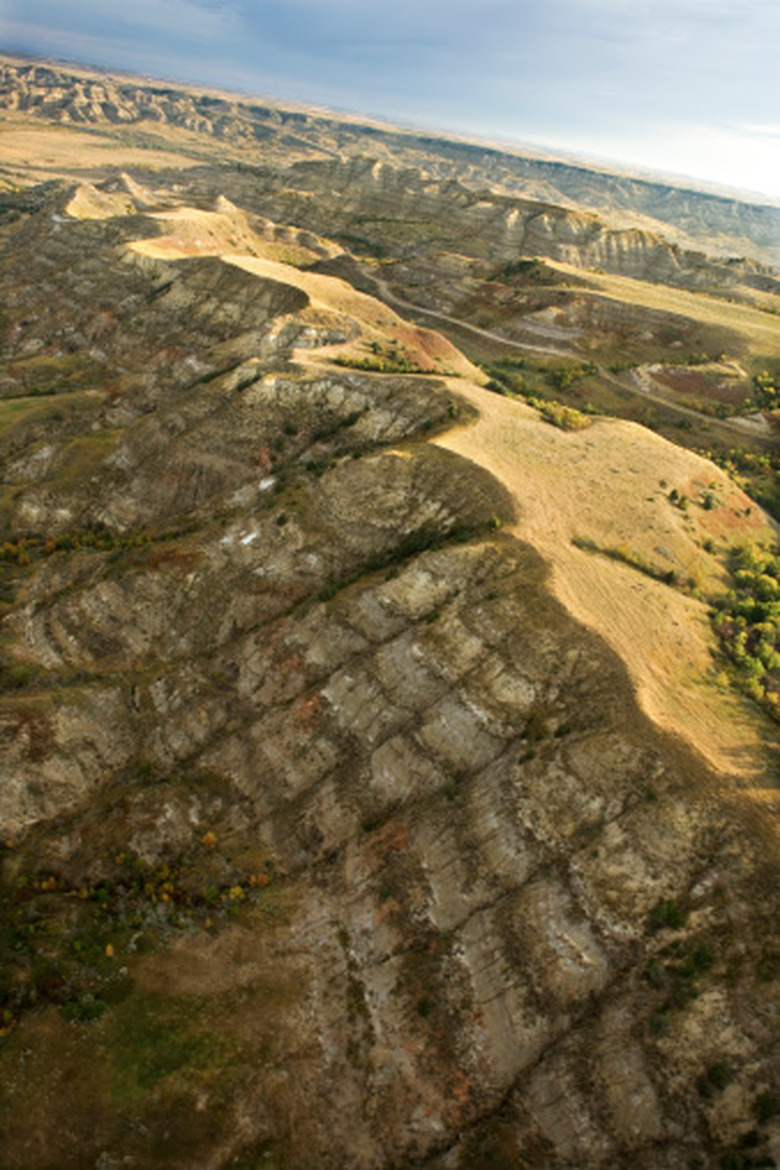Interesting Facts About Landforms
Landforms come in many varieties across the planet, ranging from small hills to large mountains and continental shelves. Continuous geological activity constantly alters the landscapes of the planet, although the changes are usually too slow for individuals to notice over a lifetime. Activities — such as the movement of the earth's tectonic plates, erosion, weathering, earthquakes and volcanic eruptions — are all the main causes for the formation of landforms.
Time
Time
A landform can be created in just a few years or over millions of years. Strong earthquakes and volcanic eruptions are the two major ways that landforms can be changed in a relatively short period of time. Earthquakes can create new fissures on the surface, while volcanoes can alter it by spewing magma. Some underwater volcanoes can even form small islands in the middle of the ocean when they erupt, although this generally many years.
Erosion, weathering and the slow movement of the tectonic plates are some of the other major ways landforms are created. Mountain ranges are the result of two tectonic plates crashing into one another; they can take millions of years to form. The Himalayas mountain range is still growing each year, and it started forming about 50 million years ago.
Oceans as Landforms
Oceans as Landforms
Even oceans, rivers and lakes qualify as landforms. Although these landforms have water, they are still shaped and directed by the land beneath and around them. Oceans make up 70 percent of the earth's surface, with an average depth of over 12,000 feet.
Effects of Landforms
Effects of Landforms
Landforms play a hand in weather conditions surrounding them. Mountain ranges serve as "walls" to winds travelling along the planet. They also gather water and release it gradually to the lower levels of the surface. Rivers and lakes maintain water on inland areas, ensuring that plants and other lifeforms have a steady supply. Warm, tropical regions evolve creatures designed to withstand the heat, while colder and mountainous regions include animals capable of withstanding extreme cold and lack of oxygen.
Volcanic Materials
Volcanic Materials
The earth is a highly volcanic planet. When the Earth was forming, volcanoes released the necessary minerals, ultimately leading to a stable atmosphere. Through this process, oceans were filled with different minerals, paving the way for organism development.
Cite This Article
MLA
Johnson, Steve. "Interesting Facts About Landforms" sciencing.com, https://www.sciencing.com/interesting-landforms-8627275/. 22 November 2019.
APA
Johnson, Steve. (2019, November 22). Interesting Facts About Landforms. sciencing.com. Retrieved from https://www.sciencing.com/interesting-landforms-8627275/
Chicago
Johnson, Steve. Interesting Facts About Landforms last modified August 30, 2022. https://www.sciencing.com/interesting-landforms-8627275/
